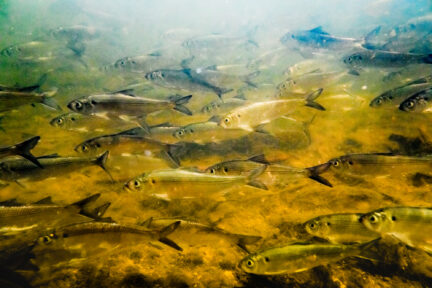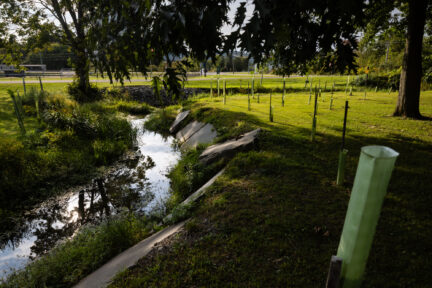Cleaner air, cleaner waters: Story map illustrates air pollution reductions over time
The Chesapeake Bay Program unveiled a new story map showing how the Clean Air Act regulations, as well as decades of enforcement actions, have led to a steady decline in air pollution across the Chesapeake region.
Today, the Chesapeake Bay Program unveiled a new story map showing how the Clean Air Act regulations, as well as decades of enforcement actions, have led to a steady decline in air pollution across the Chesapeake region. In particular, Cleaner Air, Cleaner Bay can help people see how sources of pollution and actions by partners, and specifically the Environmental Protection Agency, have led to significant reductions in airborne nitrogen, a major source of pollution that impacts the land and water in and around the Chesapeake Bay.
“We don’t often think about air as a source of pollution to Chesapeake Bay waters,” says Bay Program Director, Nick DiPasquale. “The Bay’s ‘airshed’ (the area from which air pollutants can travel before they settle to earth) is nine times as large as the watershed and includes pollution sources of all sizes—from large fossil-fueled power plants and industrial boilers to automobiles, construction equipment and farm vehicles. The good news, as illustrated by this story map, is that we are ninety percent of the way toward meeting our target for reducing airborne nitrogen through Clean Air Act regulations, thereby improving water quality in the Bay region.”
Excess nutrients such as nitrogen impair water quality by fueling the growth of algae blooms which can lead to low-oxygen “dead zones” in which marine life cannot survive. Scientists estimate that just over one-third of the Bay’s nitrogen pollution comes from the air. This airborne nitrogen reaches the Bay in two ways: by directly settling onto the Bay’s waters and by falling onto the lands, where it then runs off into the Bay’s rivers and coastal waters. It and other pollutants can travel a few yards to a few thousand miles on winds and air currents before falling out of the atmosphere and settling on land or water. In addition to national and local regulatory actions, pollution reduction practices used in backyards, in cities and on farms are a critical piece of lowering the flow of nitrogen into waterways.



